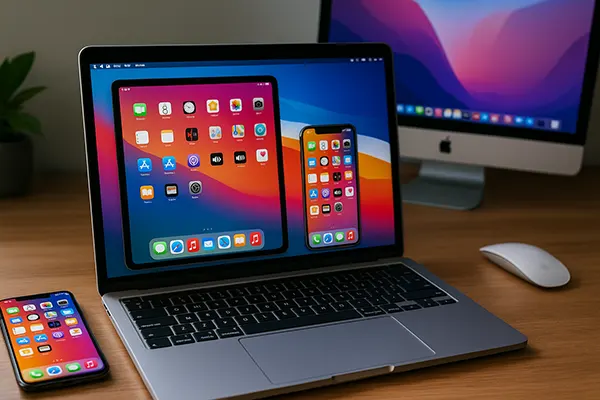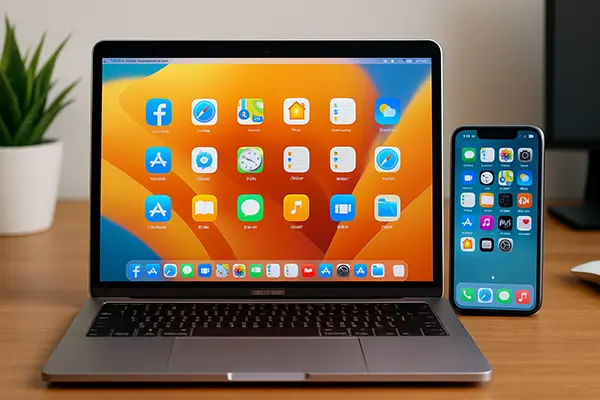How to Run iOS Apps on Mac with M1/M2 Chips: Real Tools and Working Examples

Apple’s shift to its own ARM-based M1 and M2 chips introduced a long-anticipated capability: the native ability to run iOS apps on macOS. This change blurred the lines between macOS and iOS, allowing Mac users to explore mobile applications directly on their computers. But despite the excitement, not every app runs perfectly out of the box, and the methods vary widely in terms of usability, legality, and compatibility. This article breaks down real options available for launching iOS applications on macOS as of June 2025, explains how to bypass limitations, and shares examples of working apps.
Xcode Simulator: A Developer’s Approach
Apple’s official solution for testing iOS applications on a Mac is the Xcode Simulator, included in the Xcode development environment. While this tool was originally designed for developers, tech-savvy users can also utilise it to launch iPhone or iPad apps in a simulated environment without needing physical devices. It’s best suited for testing apps developed in Swift or Objective-C, providing detailed logging, performance insights and debugging tools.
As of the latest Xcode 16 release, the simulator supports most iOS apps up to iOS 18, including graphics-intensive applications. However, it does not support App Store downloads or sideloading of .ipa files without a development profile. Users must have an active Apple Developer account to gain full access to simulator capabilities, which may not appeal to those simply looking to run casual games or messaging tools.
Despite its limitations for non-developers, the Xcode Simulator remains one of the most stable and secure environments for running iOS apps on a Mac. It’s entirely Apple-approved and does not violate any usage policies or developer terms.
Apps That Work Well in Xcode
Apps with static UIs and limited background processing tend to run best. Examples include minimalist productivity tools such as Bear, Notability, and native iOS testing demos. Some developers have reported smooth performance with older versions of Instagram and Reddit clients when compiled manually with Xcode for testing purposes.
However, apps that rely heavily on in-app purchases, sensor data (like GPS), or DRM (Digital Rights Management) protections typically fail to operate correctly or at all in the simulator. This includes streaming platforms and many mobile games tied to a device’s unique identifier.
Overall, the Xcode Simulator is an effective testing environment but far from a plug-and-play solution for everyday users.
AltStore and sideloading: More Freedom, More Risk
For users seeking more control, AltStore is a popular workaround that allows you to install .ipa files (iOS apps) directly onto your Mac without using the App Store. Originally developed to sideload apps onto iPhones, AltStore on macOS leverages the system’s iOS app compatibility layer to install and run selected apps.
The process involves installing AltServer on your Mac, using it to sign and sideload apps like Delta (a Nintendo emulator) or UTM (a virtual machine manager). These apps don’t require a jailbroken device, and AltStore has proven to be relatively safe if used properly. Still, the method does carry some legal grey areas, especially when using unofficial builds or repackaged apps from unknown sources.
It’s crucial to understand that while sideloading isn’t illegal in most regions, it can breach the terms of service of Apple’s ecosystem. Furthermore, since AltStore signs apps with personal certificates, users must refresh them every 7 days unless they possess a paid Apple Developer account.
Popular Apps Available via AltStore
As of 2025, Delta, DolphiniOS, iNDS, and Provenance remain the most downloaded apps through AltStore. These are mainly game emulators and are often used legally with self-dumped ROMs from cartridges or discs. Another widely used tool is Clip+, a clipboard manager that integrates well with macOS.
Productivity apps like Juno (a Jupyter Notebook IDE) and Mimeo for markdown previews are also commonly sideloaded by developers and students. Their availability reflects AltStore’s flexibility and appeal beyond just gaming.
However, there are clear limitations. Many commercial apps with DRM or tied to iCloud authentication cannot be sideloaded or will crash due to integrity checks. Thus, AltStore is best suited for open-source, indie, or legacy software.

iMazing and App Archive Extraction
iMazing offers another semi-technical path to launching iOS apps on a Mac. This desktop software allows users to create local backups of iOS devices, extract .ipa files from apps they already own, and attempt to run those on a Mac using macOS’s iOS app runtime. It’s particularly helpful for users who want to retain access to older versions of iOS apps no longer available on the App Store.
Since iMazing works within Apple’s own device backup and management framework, it avoids the riskier elements of jailbreaking or profile injection. However, app compatibility remains inconsistent — many apps won’t open at all, and others crash on launch due to missing device APIs or dependency on ARM64-specific hardware extensions found only on iPhones or iPads.
Additionally, Apple’s legal policies discourage redistribution of app binaries, even if they originate from a user’s own device. As such, while technically feasible, running apps from iMazing backups should be seen as experimental and only used for personal access under fair use principles.
When to Use iMazing
iMazing is particularly useful for restoring productivity apps that are no longer available on the App Store or that have undergone major changes through updates. Users often rely on it to preserve older versions of apps like Reeder, legacy Evernote, or Day One—especially when key features have been removed or replaced by subscription models. This method also allows users to avoid the introduction of ads or sponsored content in apps that were originally ad-free.
Additionally, iMazing helps maintain a stable and consistent working environment for users who depend on specific app versions for their personal or professional workflows. Teachers, researchers, and legal professionals frequently use it to preserve tools in a fixed state, ensuring compatibility with their ongoing tasks and documents.
It’s important to note, however, that this method requires some technical knowledge—such as correctly extracting .ipa files, signing them if needed, and attempting to run them. It is not suitable for novice users or those looking for an instant, plug-and-play solution. Nevertheless, for users who want full control over their apps and digital setup, iMazing offers a discreet, powerful, and reliable tool.
